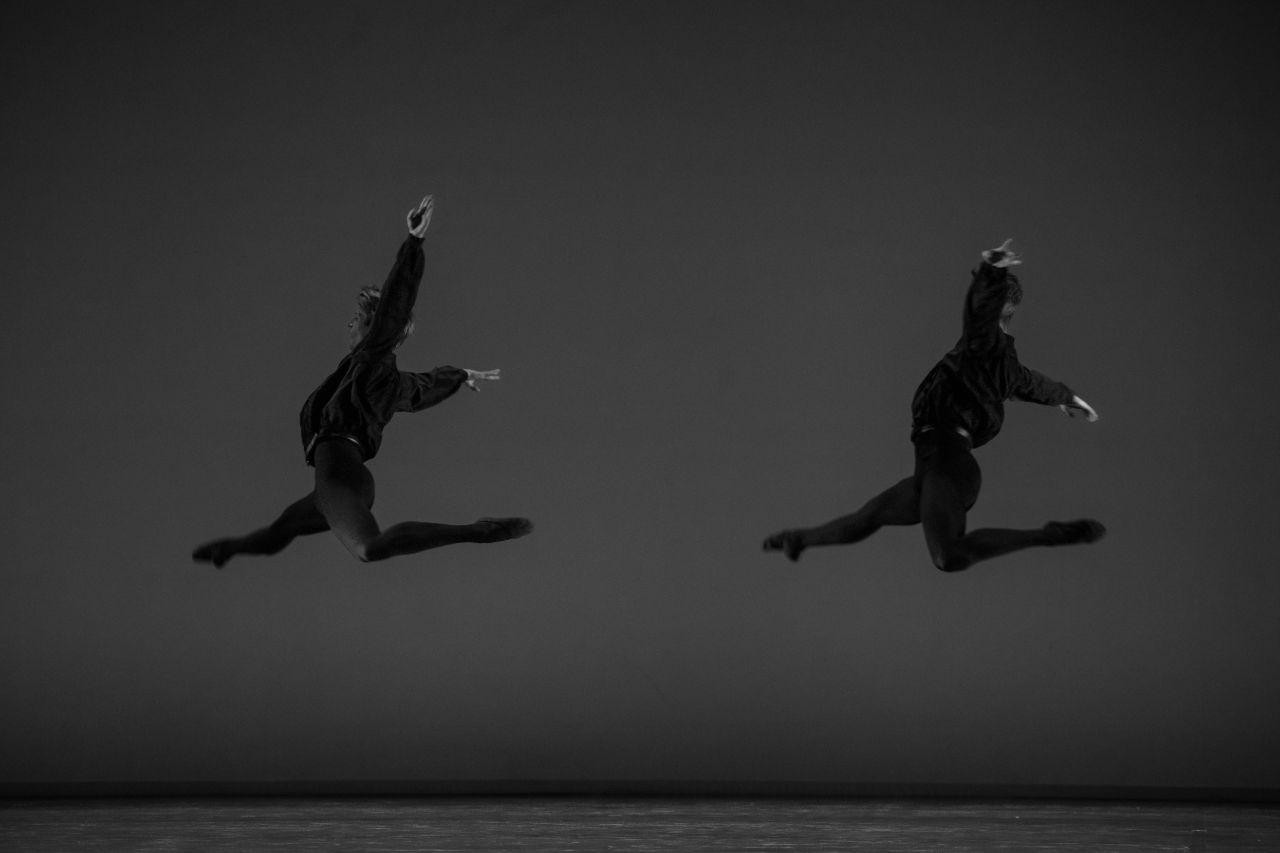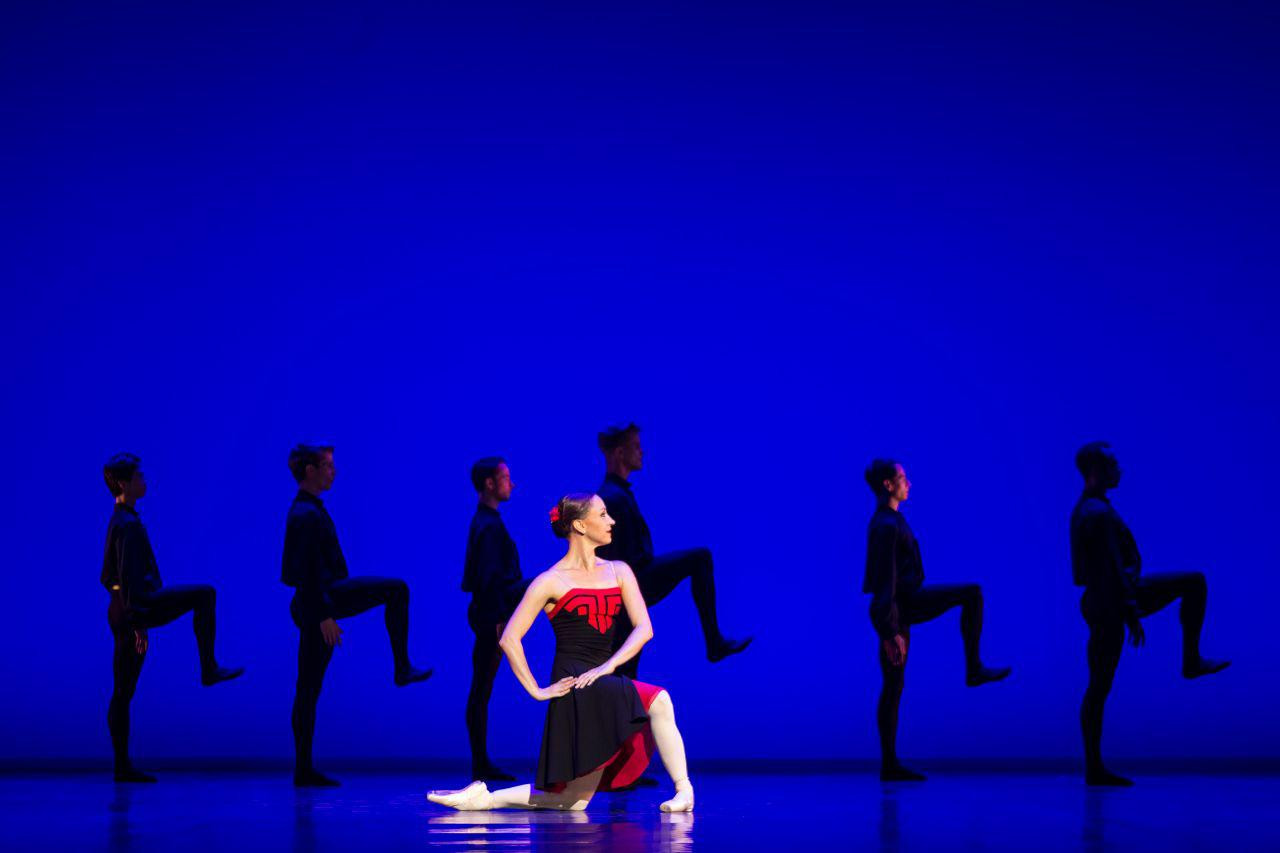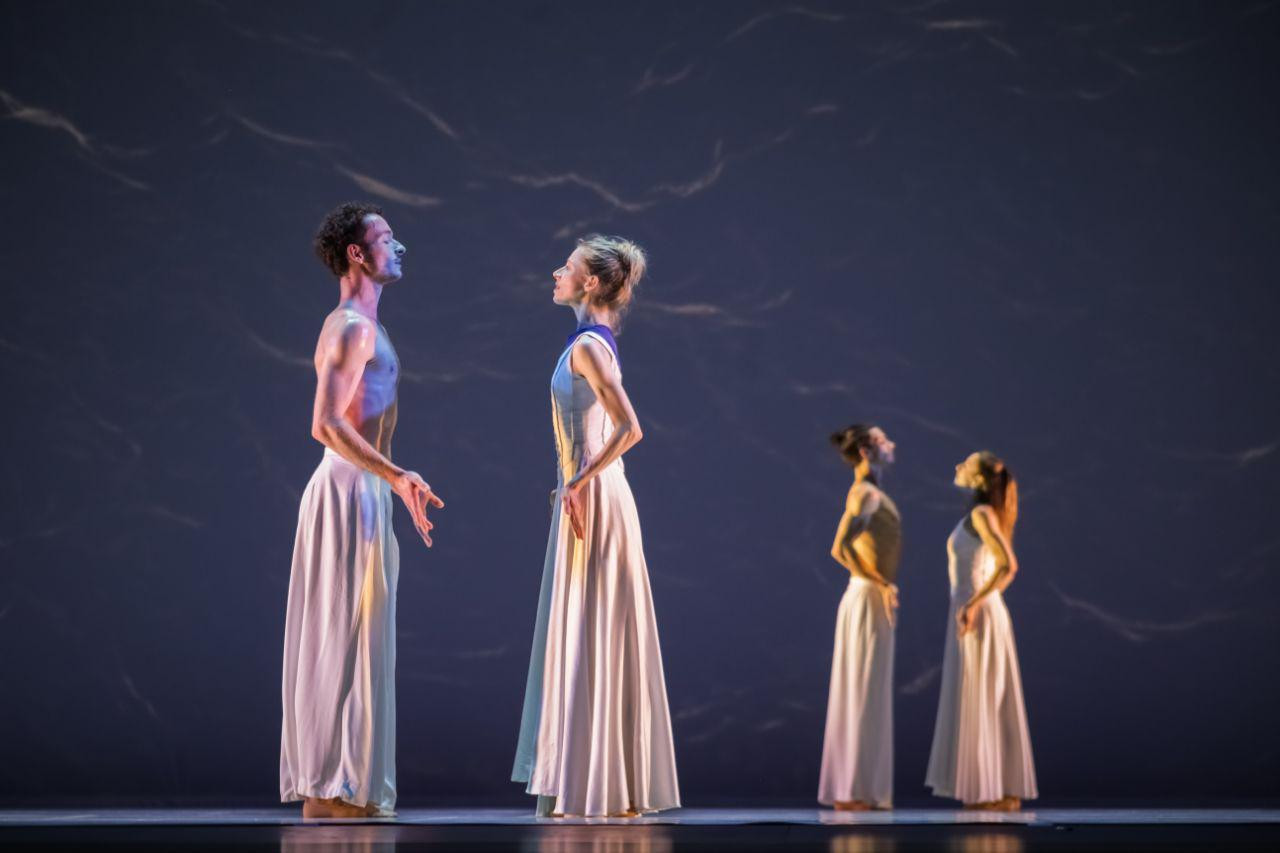Patriarchs of neoclassical ballet
Flyura Musina
ballet critic
The second day of the festival introduced us to the ballet troupe of the National Theater of Slovenia (Lublin), which celebrated its centenary this year. The repertoire of the troupe, consisting of forty technical artists, has both classical and modern productions. But it is felt, that mainstream of repertoire policy is nevertheless directed towards neoclassicism and modernity. Performances of patriarchs of neoclassical ballet - Hans van Manen and Milko Shparemblek - were presented here at the festival.

Five lines about properties of passion
The Dutch choreographer Hans van Manen is known for restraint of emotions, mathematical precision of drawing of dance and love for movement as such. As a rule, his ballets (86-year-old choreographer composed over one hundred and fifty in his long creative life) have no plot, since Hans van Manen believes that it prevents concentrating on the dance itself. However, absence of plot does not mean the absence of history. And the choreographer categorically opposes that his ballets be called an abstraction.
"My constant story is dance and dancers. I want to see people, I care about how partners meet in the hall, how they touch each other, where their views are directed. My artists often dance with eyes. There is always a story about human relationships in my ballets," the famous choreographer insists.

Van Manen considers his idol J. Balanchine and inherits his musicality, it's not for nothing that the Dutch dance guru is considered a "visual music", his dance has no voids.

Famous production "Five Tango" to the music by Astor Piazzolla explores the whole spectrum of relationships that can arise between people, between which a spark of passion has slipped. Five different tangos - five stories were told by artists of the National Theater of Slovenia technically accurate and inspired, and were warmly and enthusiastically received by the audience. It may have seemed to some that there is not much passion in their performance, as was laid down in the music of the Argentine composer, but famous softness of Slavic nature and the restraint of the Dutch choreographer made the quality of this sultry dance somewhat different, which did not spoil impression of the neoclassicism masterpiece. Breadth and softness of Slavic soul was fully revealed in "Pastoral Symphony", staged by the active classic of Slovenian ballet Milko Shparemblek.

Milko Shparemblek was born in Slovenia, and therefore revered and loved by the Slovenes as the national classics of choreography. Shparemblek reveres classical dance, which he studied first in Zagreb, and then with Olga Preobrazhenskaya and Sergei Peretti in Paris. In the 60s, he danced and staged in different European troupes, fell under irresistible charms of great reformer of dance Maurice Bejart, worked at the de la Monnaie theater and the troupe "Ballet of the XX century", supervised the Portuguese troupe "Gulbenkian ballet" and the ballet troupe "Metropolitan Opera" in New York for a time, and then returned to Slovenia and has tirelessly given the creative baggage accumulated over travel years to the native theater for 40 years. I must say that this year the choreographer turns 90, but he is still vigorous and full of creative ideas. He resumed "Pastoral Symphony", put on a famous work by L. Beethoven in 1986, on the occasion of the National Theater's anniversary, and this performance was shown by the artists from Slovenia in the second section of the festival evening.

Some things about the Pastoral Symphony.
Pastoral Symphony No. 6 is the only program piece by Ludwig van Beethoven. Written almost simultaneously with the pre-minor Heroic, in which "fate knocks on the door" (the composer inevitably lost hearing at the time) in 1808, it sharply differs. Beethoven, resigned to an incurable disease - deafness, here he does not struggle with a hostile fate, but glorifies the great power of nature, the simple joys of life. And the choreographer follows music without composing sugary pastoral scenes, he conveys what he hears in music in plastic, in motion - the primal joy of being. And it should be literally, up to the name of the parts.
Part one "Joyful feelings upon arrival in the village", the choreographer transforms into "Awakening" and draws the morning of the day. Scenographers of the performance working only with light and video projection create this feeling of a waking morning. White artists’ costumes of light flowing silk are easily painted in gentle tones of dawn, the plastic and composite constructions follow development of musical themes.
The second - "By the Stream" also follows the composer's thought. Luxurious video projection creates a plastic image of water - first a streamlet that is poured at the end of the piece across the screen. Elegant duets, trio, murmuring string background and shimmering water surface, endless cantilena of adagios - everything flows and moves with music, creating a state of peace and harmony.

The third part - "Merry gathering of settlers" is designated as "Noon", it is the most cheerful and carefree. The wicked simplicity of peasant dances and sharp humor of Beethoven’s scherzos is almost graphically embodied by the choreographer in plasticity of witty duets and ensembles, and this part ends with universal jubilation in a brightly lit scene. Artists literally bathe in the free elements of dance, and the choreographer, for all his love for classics, easily uses the whole arsenal of modern techniques, including modern, contemporary and even elements of acrobatics.
The fourth part is "Afternoon. Thunderstorm "- interrupts the festive idyll. It is a sharp contrast to all the preceding and is the only dramatic episode of the symphony: beginning suddenly, it passes to the ending without pause, "End of Day", in which the choreographer creates a plastic equivalent for "the joyful and grateful feelings after the storm".
While on stage the artists inspiredly danced the fourth part of the symphony in which the storm was raging created by inspiration of the composer and choreographer, a real thunder-storm broke out outside the theater! Amazing power of art! Or in order to control the weather all the same you need to have the talent of Beethoven and Shparemblek?
The second day of the Eurasian Dance Festival was crowned with a storm of applause, which, thanks to the festival, had a happy opportunity to get acquainted with the work of two outstanding choreographers of the 20th century.
But after the performance was over, applauses and congratulations also sounded for a long time on stage. The artistic director of the National Ballet of Slovenia, Sanya Nescovych Pershin, and the troupe's artists expressed sincere gratitude to organizers of the festival and admiration for the beautiful scene, the magnificent theater "Astana Ballet" and the sensitive, responsive audience.
And we are waiting for the following equally strong, but very different impressions. After all, from admiring the beauty of the pure motionless plot of the neo-classical, we turn to the Shakespeare’s passions and high drama. We are waiting for a meeting with Sergei Prokofiev's ballet "Romeo and Juliet" staged by legendary Yuri Grigorovich, which was brought to the festival by the oldest theater in Kazakhstan - the State Academic Theater of Opera and Ballet named after Abay. It will be very different passions!